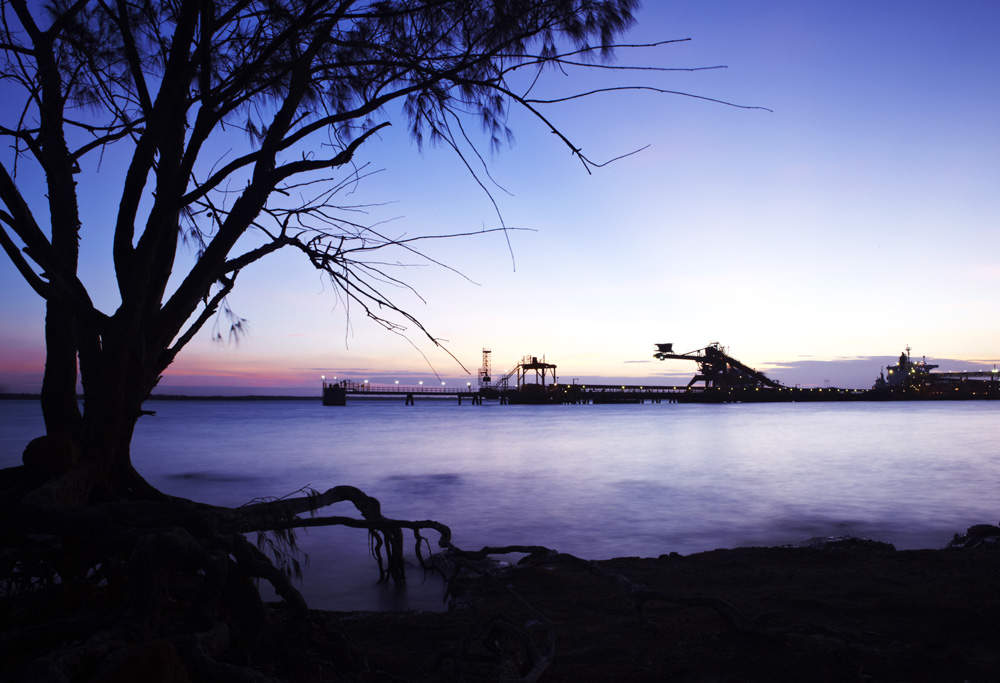
The environmental impacts of mining operations are well-documented, and laws often require companies to commit to environmental rehabilitation projects before operations can even begin. Recently, discussion of the consequences of mining has shifted to an even narrower focus: the potential impact on wildlife.
On both land and at sea, national legislation has a significant influence on the protection offered to wildlife, and a lack of regulation can pose a significant threat to wildlife.
Attempts to tighten regulations
In July, a new species of snake, named Vermicella parscauda, was discovered in Queensland, Australia, and an ‘urgent conservation concern’ was immediately declared by non-profit organisation Biotaxa.
Professor Bryan Fry of the University of Queensland said that only six specimens of the snake were found near Weipa on the Cape York Peninsula, near Rio Tinto’s bauxite mining operations, and that mining in the area was having a destructive impact on local wildlife.
“Bauxite mining is a major economic activity in the region, and it may be reshaping the environment to the detriment of native plants and animals,” he said. “Every species is precious and we need to protect them all, since we can’t predict where the next wonder-drug will come from.”
Nearly 42 million tonnes of bauxite, which contains aluminium oxides and hydroxides, is produced each year from the Weipa operation, as well as the Worsley-operated Boddington mine in Western Australia.
While attempts to tighten regulations covering mine rehabilitation – and to ensure the environmental and ecological impacts of operations are kept to a minimum – have been made, their effectiveness has been limited. The Queensland Government is set to pass into a law a bill that would spread rehabilitation costs across private companies and the state for new mines, but the legislation does not cover existing operations such as Rio Tinto’s Weipa mine.
In Australia’s Northern Territory, the state government has moved away from highly-regulated state control to enabling individual companies to set their own standards for minimising environmental damage.
Rio Tinto has been under investigation for reportedly dumping 80 tonnes of aluminium oxide into Gove Harbour from its bauxite refinery prior to the operation’s closure in 2014. The company’s conduct suggests that its ISO 14001 environmental accreditation, an international standard of commitment to reduce environmental impact launched in 2015, is not as indicative of actual environmental performance as could be expected.
Mining in the sea
The Government of Belize, meanwhile, has been more active in passing legislation to protect its wildlife. In January, the Central American nation signed a moratorium on offshore oil exploration and drilling covering the entirety of Belizean waters to protect the Belize Barrier Reef, the world’s second-largest barrier reef system.
While it is true that both countries are motivated to some extent by an interest in their national economies, rather than a necessary desire to protect wildlife – an unregulated mining sector in Australia contributed to 0.7% GDP growth by the middle of this year, while a tougher approach in Belize will protect a tourism industry that, alongside other service industries, accounted for 67.1% of the country’s GDP in 2011 – the potential of stronger regulation is clear.
In the oceans, many deep-sea operations involving wildlife are still under construction. The Papua New Guinea Government granted Canadian company Nautilus Minerals an environmental permit in 2009 and a mining lease in 2011 for the Solwara 1 deep-sea mining project, which aims to extract copper and gold from the waters around the Pacific nation.
While Nautilus claimed that ‘considerable effort’ was made to assess the environmental damage of the project in 2008, it still conceded that noise and light pollution from the project’s constructs would disrupt local wildlife, in addition to the extensive habitat damage caused by deep-sea drilling.
The project has also come under sustained pressure from local groups, including the environmental group the Alliance of Solwara Warriors, who campaign against deep-sea mining in Papua New Guinean waters. Jonathan Mesulam, a representative of the group, criticised Nautilus and the national government for developing and permitting such a destructive project.
“This project is set to destroy and disrupt the daily survival of our local communities in New Ireland Province,” Mesulam said, as local groups have launched legal action against Nautilus for not adequately consulting them during Solwara 1’s planning phases.
Beyond national government, the International Seabed Authority (ISA) last month published a list of no-mining zones to protect marine life, which could prove to be more influential than the ISO accreditation for land-based operations. Backed by the UN Convention on the Law of the Sea, the ISA worked with more than 80 researchers from 16 institutions over three years to determine the areas most at risk from mining operations, and assess how seafloor and mining practices will change over the next century.
Recent history has suggested that regulation is a necessary step in reducing the environmental impact of mining operations, but national and economic interests have prevented conservatory regulations being adopted in several countries. Implementing guidelines that operate beyond national boundaries is a potential solution, but it remains to be seen if the ISA will be able to influence mining and protect wildlife to a greater extent than the ISO accreditations that came before it.



